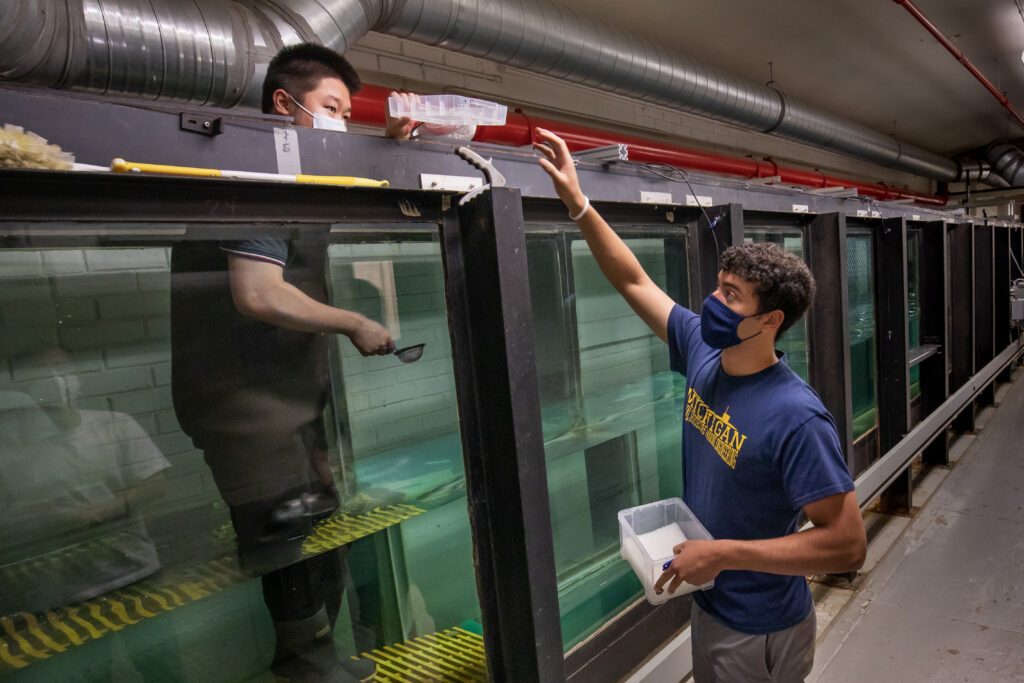New information about an emerging technique that could track microplastics from space has been uncovered by researchers at the University of Michigan. It turns out that satellites are best at spotting soapy or oily residue, and microplastics appear to tag along with that residue.
Microplastics—tiny flecks that can ride ocean currents hundreds or thousands of miles from their point of entry—can harm sea life and marine ecosystems, and they're extremely difficult to track and clean up. However, a 2021 discovery raised the hope that satellites could offer day-by-day timelines of where microplastics enter the water, how they move and where they tend to collect, for prevention and clean-up efforts.
The team noticed that data recorded by the Cyclone Global Navigation Satellite System (CYGNSS), showed less surface roughness—that is, fewer and smaller waves—in areas of the ocean that contain microplastics, compared to clean areas.
In preliminary testing, they used the technique to spot suspected microplastic releases at the mouth of China's Yangtze River and to identify seasonal variations in the Great Pacific Garbage patch, a convergence zone in the North Pacific Ocean where microplastic collect in massive quantities. But until now, the team was unsure about the nature of the relationship between microplastics and surface roughness.
A newly published study in Scientific Reports shows that the anomalies in wave activity are caused not by the plastics themselves, but by surfactants—soapy or oily compounds that are often released along with microplastics and that travel and collect in similar ways once they're in the water.
Chris Ruf, the Frederick Bartman Collegiate Professor of Climate and Space Science at U-M and an author of the study, explains that a satellite-based tracking tool would be a major improvement over current tracking methods, which rely mainly on spotty reports from plankton trawlers that net microplastics along with their catch.
"NOAA, the Plymouth Marine Lab in the U.K. and other organizations are very aware of what we're doing, but we need to be cautious and fully understand the system's limitations before putting it into widespread use," said Ruf, who also leads CYGNSS. "These new findings are an important step in that process."
The research team, which also included former naval architecture and engineering graduate researchers Yukun Sun and Thomas Bakker, gathered the data at U-M's Aaron Friedman Marine Hydrodynamics Lab. Using the facility's wave tank, they measured the effects of surfactants and microplastic pellets on waves generated both mechanically and by wind from a fan.
 Yukun Sun, a graduate student research assistant, and William Leal, an undergraduate research assistant, both in the Department of Naval Architecture and Marine Engineering at U-M, place microplastic pellets on the water in the wind wave tank at the Marine Hydrodynamics Laboratory. (Photo credit: Robert Coelius, Michigan Engineering)
Yukun Sun, a graduate student research assistant, and William Leal, an undergraduate research assistant, both in the Department of Naval Architecture and Marine Engineering at U-M, place microplastic pellets on the water in the wind wave tank at the Marine Hydrodynamics Laboratory. (Photo credit: Robert Coelius, Michigan Engineering)
They found that, in order for microplastics to affect surface roughness, their concentrations had to be much higher than those typically found even in polluted areas of the ocean. Surfactants, however, had a pronounced effect. The researchers found that surfactant-laden water required more wind to generate waves of a given size, and that those waves dissipated more quickly than they would in clean water.
Yulin Pan, U-M naval architecture and marine engineering assistant professor and corresponding author on the paper, says that this initial discovery will drive further research into how surfactants and microplastics interact in the ocean.
"We can see the relationship between surface roughness and the presence of microplastics and surfactants," Pan said. "The goal now is to understand the precise relationship between the three variables."
They plan to use a combination of water sampling, satellite observations and computer modeling to build that understanding. Ultimately, they hope to develop a system that governments, cleanup organizations and others can use to both spot existing microplastics and predict how they're likely to travel through waterways.
Ruf and other members of the team are featured in the documentary Plastic Earth, which explores the scale of plastic pollution and engineering solutions in development.
The research was supported in part by NASA Science Mission Directorate contract NNL13AQ00C.
Journal Reference:
- Yukun Sun, Thomas Bakker, Christopher Ruf, Yulin Pan. Effects of microplastics and surfactants on surface roughness of water waves. Scientific Reports, 2023; 13 (1) DOI: 10.1038/s41598-023-29088-9


